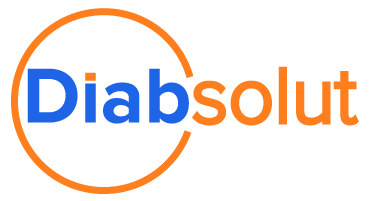Mobile Field Service Solution Optimization: Healthy vs. Good Enough
Author: Stephen Smith
 When asking people what makes a healthy or robust mobile field service solution, the answers I get vary widely. The thing that connects their definitions is that they align to individual experiences. They focus on immediate, perceived needs, rather than:
When asking people what makes a healthy or robust mobile field service solution, the answers I get vary widely. The thing that connects their definitions is that they align to individual experiences. They focus on immediate, perceived needs, rather than:
- A longer-term and holistic approach to broader industry requirements
- And a mobile user’s needs with respect to their role, tasks, challenges, etc.
Solutions that focus on immediate, perceived needs fall into the category of ‘good enough to get by, rather than healthy, because they rely on a prescriptive approach that isn’t adaptable.
A prescriptive approach can be great when it’s properly aligned to a particular industry’s needs, in the context of a user. However, when a prescriptive approach is rigid, it will never fully support the range of variability that most field service organizations need:
- Field service covers a broad spectrum of industries, and solution use cases vary greatly
- These industries, and organizations themselves, are constantly changing, growing, and evolving
- User expectations are dramatically greater than they were 10, or even 5 years ago — and are continuing to accelerate
- Mobile solution must address these needs and adjust to those variables
- They need to handle tasks in a holistic and individualized way to be considered healthy, survive deployment, and last beyond a few years of use
This blog will explain why that’s a problem in more detail, give readers a way to define what makes a healthy mobile field service solution for their business, and offer advice when accessing solutions, in order to both achieve a healthy solution and maximize ROI.
Mobile Field Service: The Problem with Good Enough
If a solution is very good at doing the one thing it’s supposed to do, and that one thing is very important for your business — why is it a problem if it’s still ‘good enough to get by’?
- Any healthy mobile solution should support the digitalization of mobile data to collect and deliver back what was input accurately
- If a solution is not set up to optimally support use cases (via user-friendliness, user engagement, etc.) in the context of what is being done (what’s being done, when, and by whom) — an organization will not get the full picture from the data they’re collecting
- Applied context, validation, input confirmation, and controls all help ensure data quality at the point of entry and are essential for a solution to be considered healthy
- A ‘good enough to get by’ solution won’t address the variabilities across a range of use cases and touch points with users
- Mobility needs to be treated like a tool, easing the user’s ability to do the work in the way the business intends it to be done
- That tool needs to be something the user wants to use, as it’s an imperative part of their toolkit to ensure service operations are a success
- Mobility needs to be treated like a tool, easing the user’s ability to do the work in the way the business intends it to be done
- Often, when attempting to create a healthy solution, the solution is set up to do as much as possible and allow users (through training and experience) to individualize how a use case is being addressed
- This type of approach and solution will not help ensure consistent quality service, which increases the potential to erode the business brand
- While a rigid prescribed approach can deliver process governance, in won’t offer operational variability and agility
- This creates gaps when the solution must be used to both address use cases and accommodate changes in service, assets, customer needs, timeframes, weather, etc.
- Even if it’s ‘good enough’ to address a concern for one type of user, it may not be appropriate for every user or role
- This puts a burden on a business in terms of administrative effort
- For example, while a solution might resolve an issue in the field it could be creating additional tasks or inefficiencies for dispatch or the back-office
Selecting a Healthy Mobile Solution for Your Business
So, how do you define and select a healthy mobile field service solution for your business? As mentioned above and in the introduction of this blog, there’s a lot of variability when it comes to mobile field service solution needs — and because of that there isn’t a gold standard.
That doesn’t mean there isn’t a gold standard for your business. Set your expectations high and take it step by step, starting with the basics (narrowing down solution options based on their capabilities) and ending with the specifics (a solution’s ability to meet prescriptive requirements in a holistic and adaptive way).
- In terms of basics, look at solution agility; that term gets thrown around a lot, but it’s referencing a solution’s ability to adapt, adjust, and keep up with what you need in both the short- and long-term.
- A healthy solution can adapt to variables with out-of-the-box configuration rather than customization
- It can support your business through change, differing scenarios or roles, and growth
- Take a closer look at user needs, as well as your entire range of use cases.For example, a healthy mobile field service solution for your business might include things like user-friendly leak surveys, easy onsite quote configuration and invoicing, or offline functionality, so that users don’t have to switch devices to enter information and complete tasks.
- A healthy, agile solution is one that can meet the majority of your use cases, not just one or two
- Get your team involved ensures the solution supports and engages with a broad range of users
- Remember that a healthy mobile solution will never get in the way of a user doing what they need to do
- We’re all now very accustomed to a consumer mobile experience, which has had an impact on what is expected from a mobile field service solution user experience
- A mobile field service solution that isn’t user-friendly will get the same reception any app does that’s not easy to use — people aren’t going to want to use it
- Ease of use, user engagement, and user adoption all factor into mobile solution health
- Look at gaps, manual processes, or unresolved pain points; those are areas to consider incorporating into your solution to improve its health.
- What do you know about your day-to-day operational processes, both in the field and across your business (particularly the processes that field data either comes from or is used for)?
- How many of those processes follow best practices?
- Could they be simplified or better incorporated into your solution?
- What tools and workflows would both continually engage your user base, while helping them get the job done better?
- As an example, let’s take a look at timesheets; how much time, effort, and resources does it take for your business to process timesheets for field service employees or contractors?
- When and how is that data being entered?
- How do approvals work?
- How much detail do your current timesheets provide to help with KPIs or metrics?
- How is timesheet information passed to the next appropriate person or department?
- How many people need to touch that information before it’s passed on to payroll?
- If you notice the amount of time, effort, and resources start to add up when it comes to timesheets or any other processes, it’s a good indication that optimizing that process and including it in your solution would help create a healthy mobile field service solution for your business
Achieving a Healthy Mobile Field Service Solution
Whether you have an idea of what a healthy solution looks like for your business or need assistance to better define that, the next steps usually involve speaking with a vendor or implementation partner to get help from a solution or technology expert.
If you want to achieve more than a ‘good enough’ solution with your investment:
- Give them your list of prescriptive concerns and ask for specifics about how the solution will avoid the issues listed in the first section of this blog (e.g., how will it also support context, can it give detail where you need it, will it support use and engagement for all users, etc.)
- Make sure it’s agile, but that there’s also a plan in place to ensure it delivers full benefits and ROI
- Design and discovery are needed to make sure a solution fully meets your organizational needs in a healthy way
- Solution ownership is a key part of the benefits you should expect to maintain solution health (including process and technical documentation to help with future improvements and change)
- Be sure to run through a scenario of defining, monitoring and adjusting the solution on your own
- Don’t be afraid to throw them curveballs
- If you have a person on your field team that keeps forgetting end-of-day procedures or a field supervisor that needs to provide a dozen types of reports for executive summaries — see how the implementor and solution can handle it — and ask for specifics
- Again, get your team involved, especially when it comes to the look and feel of the solution
- Engage with them to continually assess and refine the solution so you can be sure the tools they’re using are actually supportive when getting work done — and to help establish a culture that values agility and continuous improvement
- Work to establish a way to leverage the agility of your new mobile solution to take in and respond back to requests
If you’re ready to take those next steps, please contact us for advice or assistance. We can offer an industry POV in terms of Salesforce Field Service, but also specialize in helping organizations better understand their needs and put practical plans in place to meet them — including healthy mobile field service solutions.
Search
Trending Topics
- E18: Click FSE Migration to Salesforce Field Service – Java With Sugar Podcast
- E17: The Process of Migrating from a Product That Is Retiring – Java With Sugar Podcast
- E16: Decoding FSE’s End-of-Life and Common Migration Practices – Java With Sugar Podcast
- A Dual Approach to Efficiency in Field Service Management: Asset-Centric vs. Customer-Centric Models
- E15: Trends and Limitations in AI – Java With Sugar Podcast
- Enhancing Field Service Operations with SFS-X
- E14: Our Point of View and Insights on AI – Java With Sugar Podcast
- E13: What Is Artificial Intelligence and Why Is It Beneficial for You? – Java With Sugar Podcast
- AI Ethics: What Is It and Why Does It Matter?
- 3 Tips to Improve Your Strategy and ROI When Selecting SaaS Solutions
